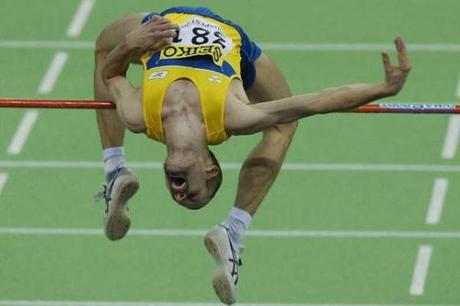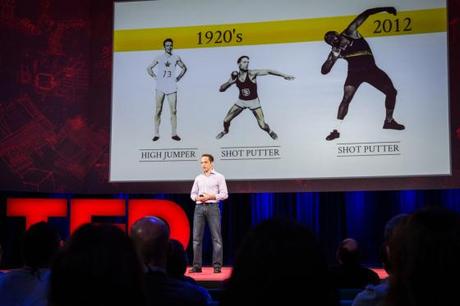The successful growth of any innovation rests in its ability to demonstrate that it is creating a positive impact. The impact may be difficult to detect from the beginning but exploring the way the innovation creates positive change is crucial.
Reading the book The Sports Gene by David Epstein, made me realize how deceptively easy it is to assume that the introduction of an innovation is the only factor that needs to be taken into account when looking at the impact an innovation has had. Often there is a complex interaction between lots of factors, for example, the motivation to correctly use an innovation. In hindsight many innovations became successful and popular due to non-obvious and hard to asses factors. This means that we should be careful when assessing the impact of innovations when designing them.

The Olympic motto is “Citius, Altius, Fortius.” Faster, Higher, Stronger. And it is believed, says David, “that we’re somehow just getting better as a human race, inexorably progressing”. Technology has transformed many sports, and despite lots of new innovative training methods in track and field, the track surface technology is the factor that has made a huge impact. Track surface technology provides runners with the highest levels of surface performance for competition and cushioning for safe training.
“In 1936, Jesse Owens held the world record in the 100 meters. Had Jesse Owens been racing last year in the world championships of the 100 meters, when Jamaican sprinter Usain Bolt finished, Owens would have still had 14 feet to go. . . Biomechanical analysis of the speed of Owens’ joints shows that had been running on the same surface as Bolt, he wouldn’t have been 14 feet behind, he would have been within one stride.“
In the talk below you can hear the difference between the time when Usain Bolt and Jesse Owens pass the finish line (this is at the beginning of the video, begins around 45 seconds into the talk). Thus, new shoes and clothes, new training methods and running techniques seems to have had a minimal impact for the 100 meter race.
New material in golf balls, tennis rackets and pole vault has made a huge impact on the respective sport as this quote from Science Clarified suggests:
“In the past century, carbon fiberglass—lighter than metal or wood—revolutionized both tennis and the pole vault. When pole vaulting began as a competitive sport, athletes used bamboo poles with a sharp point at the bottom to plant in the grass. Today, modern poles are made out of fiberglass and are much lighter than their bamboo or metal counterparts. The lighter poles allow athletes to run faster and gain the momentum they need to vault higher.”
The new poles also have more spring. The fiberglass pole absorbs more of the vaulter’s energy when it bends and as it straightens. Along with rubberized track surfaces, special boxes for planting the pole, and padded landing pits, the new fiberglass poles help athletes attain records that would be impossible to obtain using the traditional equipment.“
You may have noticed that the gains of the innovation as shown above is not straightforward derived from only the attained lightness of the poles.
Also, innovative ideas by tennis players like Björn Borg who used a wooden racket and developed the idea to use a two-handed backhand shows that it is not easy to tell in hindsight which factors made an innovation a success.
The Big Bang of Body Shape
Innovations and changes in material are not the only factors that have resulted in records being set. At the same time there has been what is described as “The Big Bang of Body Shape”. The gene pool in different sports has changed. Previously it was assumed that an average body type was ideal. Today there are huge difference between athletes in different sport.
In the 1920 there was no difference in average height between an elite high jumper and an elite shot putter, while today the average elite shot putter is 6.3 cm taller and 59 kg heavier. Thus, it is easier to tell what sport an athlete is competing in. Yet there are exceptions and someone can compensate for a certain body shape or height by developing certain training techniques. For example, the high jumper Stefan Holm was shorter than the average elite high jumper but he won an Olympic Gold medal. He perfected his sprinting approach towards the bar.

Mindset
Athletes also have different mindsets. Our understanding of how we the brain acts as a limiter, means that we have insight into how we can push it back and trick the this brain into believing that we are not in danger even f we run another kilometer in the heat. Motivational aspects has had an impact on performance in particularly endurance sport.
Innovations
Innovations are by its very nature risky and unpredictable. It is unclear who will benefit from it, and when and under which particular set of circumstances.To be successful innovators, economies and companies should stretch their imagination and analysis to the utmost before they assess innovations, either to implement, or to reject. The possibilities and opportunities of not yet implemented innovations are far from obvious. A wide search for inspiration and ideas about factors that influence the outcome of an innovations should be carried out.
Photo: IAAF
